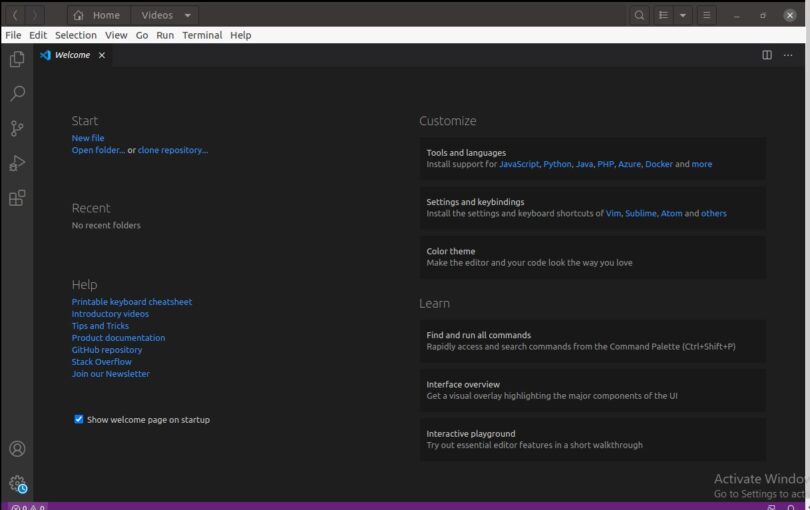

- MICROSOFT VISUAL STUDIO CODE UBUNTU CONTAINER INSTALL
- MICROSOFT VISUAL STUDIO CODE UBUNTU CONTAINER FULL
- MICROSOFT VISUAL STUDIO CODE UBUNTU CONTAINER MAC
MICROSOFT VISUAL STUDIO CODE UBUNTU CONTAINER INSTALL
RUN apt-get update & export DEBIAN_FRONTEND=noninteractive & apt-get install gnupg wget -y & \ # Note: this installs the necessary libs to make the browser work with Puppeteer.ĮNV PUPPETEER_SKIP_CHROMIUM_DOWNLOAD true Let's airlift the code from this article into our setup.Īdd the following lines to the Dockerfile: # Install Google Chrome Stable and fonts Running Puppeteer from a container is not straightforward.

We're going to use the Python version of Puppeteer called Pyppeteer. This also makes adding new packages easier, as you don't have to restart your dev container. It will complete fast, as all things are already installed in your dev container. With this simple line, you will install all the packages specified in your requirements.txt file: %pip install -quiet -exists-action i -disable-pip-version-check -r. Yo don't have too, but it might make things easier if you do and it caters to people that don't use your setup. Do I still need to install packages in my notebook? This makes sure the container installs the packages you need for your notebook. Next, add the requirements.txt to the root of your project and enter the following lines: ipython This makes it possible to start using a requirements.txt file, to install packages with PIP on a container level. RUN pip3 -disable-pip-version-check -no-cache-dir install -r /tmp/pip-tmp/requirements.txt \ devcontainer folder and uncomment the following lines: # If your pip requirements rarely change, uncomment this section to add them to the image.

Install IPython & Pandas in the Dev Container The setup generates the configuration files in the. We don't need Node.js, so let's select None (can be enabled later, but this option will make your container build faster).Select 3 as the version (it will add the latest anyway).Search for: Remote-Containers: Add Development Container Configuration files.Open the command palette (F1 on Windows).Let's start with a Python 3 development container:

MICROSOFT VISUAL STUDIO CODE UBUNTU CONTAINER FULL
It allows you to open any folder inside (or mounted into) a container and take advantage of Visual Studio Code's full feature set. The Visual Studio Code Remote - Containers extension lets you use a Docker container as a full-featured development environment. That's why I now use Visual Studio Code and "dev containers":
MICROSOFT VISUAL STUDIO CODE UBUNTU CONTAINER MAC
I work on Windows, my colleagues on Mac and Linux. This increases when you need to share that setup with another developer on another platform. I have a love and hate relationship with Python it is super easy to develop in Python (abundance of examples and packages, cross platform), but the setup of your development environment (Python versions, package versions) is too cumbersome.


 0 kommentar(er)
0 kommentar(er)
